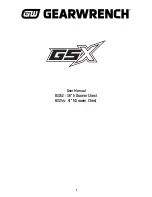
USB 3.0-to-SATA II RAID Subsystem
User’s Manual
17
IMPORTANT: If a new/replacement hard disk (HDD) will be used to
replace a failed hard disk, make sure of the following conditions:
a.
The new/replacement HDD is in good condition.
b.
The new/replacement HDD is same hard disk model (same
capacity) or has bigger capacity. A 500GB HDD from one
manufacturer/model may be slightly different in actual capacity
from another manufacturer/model.
c.
The replacement HDD has no existing (old) RAID configuration.
If there is, the RAID configuration on the replacement HDD
must be deleted first.
To verify if the new/replacement HDD has existing RAID
configuration, make sure the RAID logical volume is not in use,
then power off the RAID unit. Remove all disk drives (take note
of their arrangement/order), insert the replacement HDD, and
power on the RAID unit. Check the RAID and Disk Information
in miniEPICa GUI if the HDD is “Unreleased” or contains RAID
configuration.
To delete the existing RAID configuration on the replacement
HDD, go to Advanced Raid Configuration, select “Delete RAID”
and select the RAID configuration and click “Apply”. Verify that
the HDD status becomes “Unreleased”.
After the RAID configuration is deleted from the replacement
HDD, power off the RAID unit, remove the replacement HDD,
insert all the other HDDs (in same order), and power on the
RAID unit. When one HDD fails, the replacement (unreleased)
HDD can now be used to swap any failed HDD.
















































